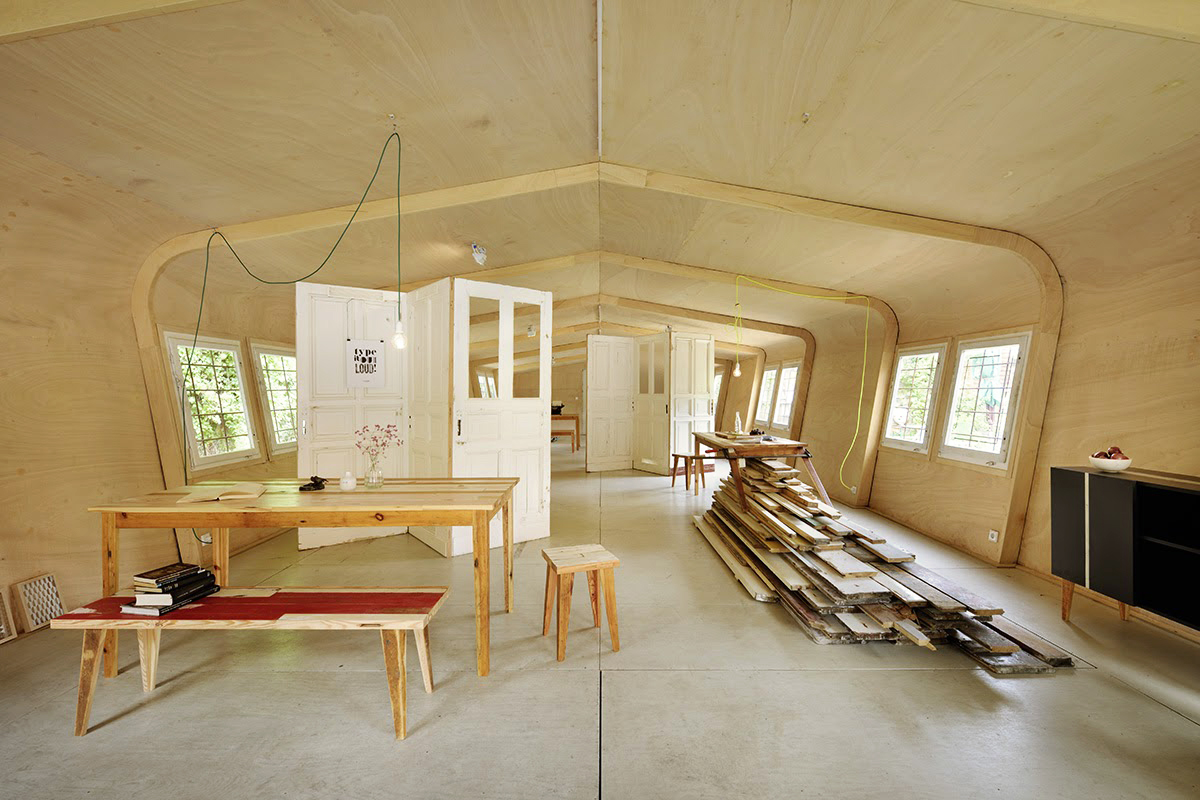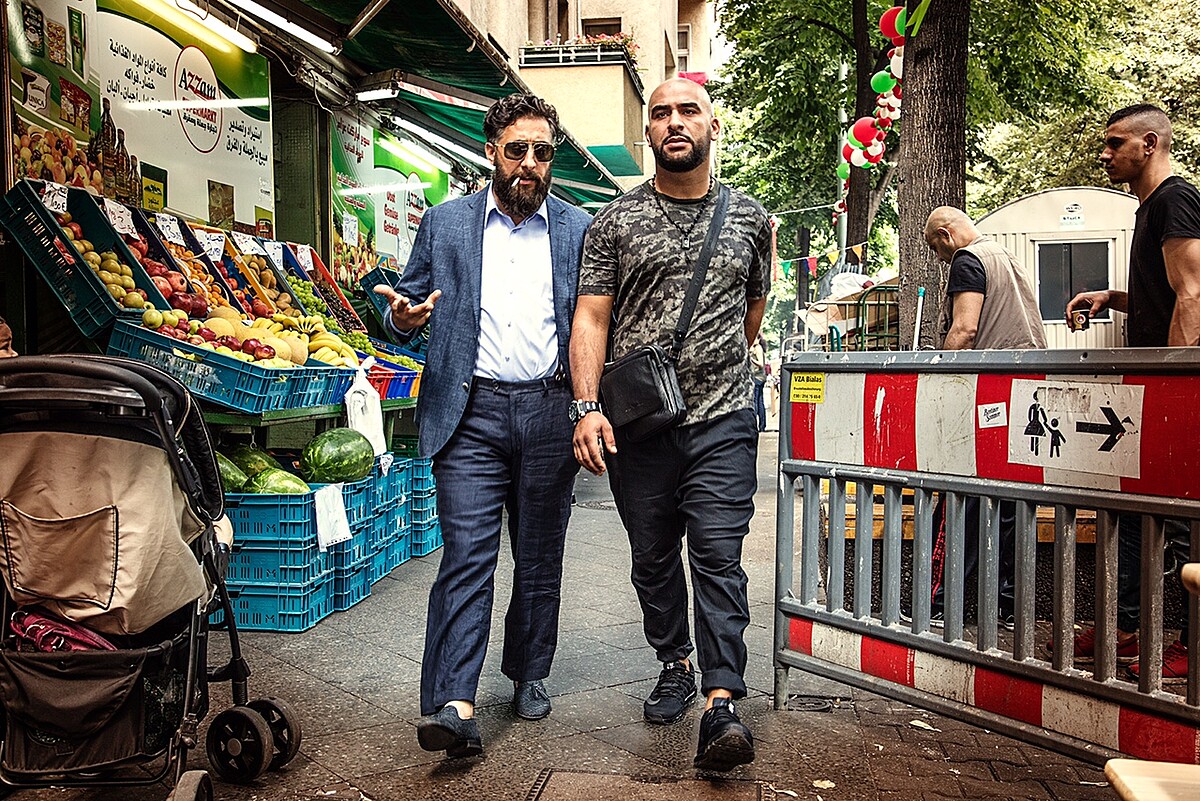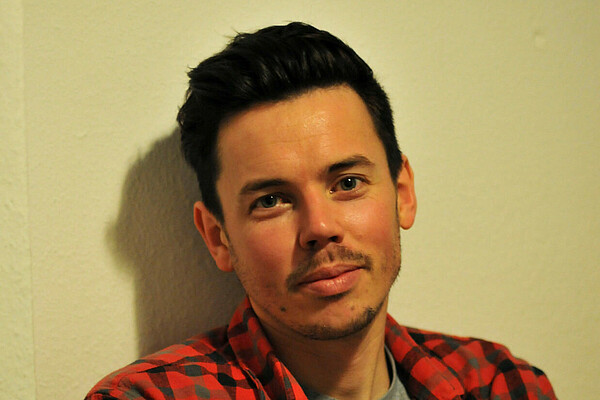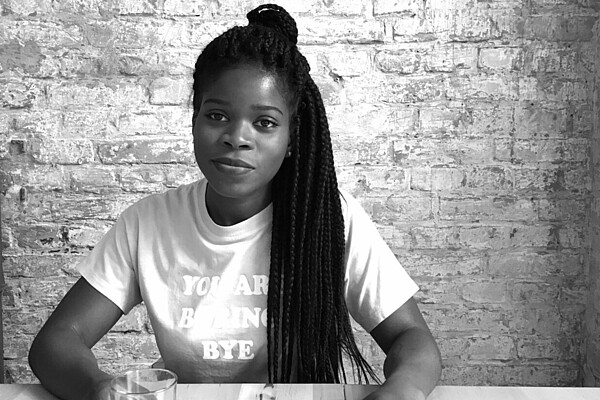Creative and in Business
The central Berlin districts Prenzlauer Berg and Pankow offer a wide variety of creative urban environments.
San Francisco is by all means a city comparable to Germany’s capital. Berlin has startups, industries, accelerators, universities, operas, theatres, technology parks, and urban flair. But what you don’t find so much of in Berlin is hills. Berlin is pretty flat.
Elevations are so noteworthy that two of the few hills – Bergs in German – are eponymous for their districts. The Kreuzberg is an artificial hillock in the western part of Berlin – Kreuz means cross, so if you see someone wearing an X-Berg sweatshirt, they probably live in Kreuzberg. Prenzlauer Berg is a trendy area in the eastern side of the city.
Back in the 90s, Prenzlauer Berg was the go-to place for party people. Nowadays these folk have grown up and had kids, and the district is renowned throughout Germany as being predominantly populated by hip young parents pushing prams along the cobbled streets while slurping lattes.
A City Within A City
Administratively, the more glamorous Prenzlauer Berg belongs to its northern neighbor district Pankow.
Back in the days of the GDR, Pankow was known throughout West Germany primarily for the pop song Sonderzug Nach Pankow (special train to Pankow), a surprisingly fun political ditty that musician Udo Lindenberg sang to the tune of Chattanooga Choo Choo. The area features a range of different quarters, from prefabricated high-rise buildings for “the working class” to avenues lined with villas, which before 1990 were mostly inhabited by party officials.
Pankow has 13 sub-districts, including Prenzlauer Berg. All in all it encompasses over 100 square kilometers north of the central Alexanderplatz. The most populous part of Berlin, around 400.000 people live in Prenzlauer Berg/Pankow. The area has a high number of freelancers, technical services, and research institutes, as well as over 20.000 businesses, a School of Art, and a planetarium. On the outer edges of Pankow you’ll find industries focussing on rail and traffic technology, energy, mechanical engineering, and especially health and biomedicine at the Campus Berlin-Buch. Nearer the center you’ll find more IT, creative industries, media, and music businesses.
The oldest and arguably nicest beer garden in Berlin is the Prater in Prenzlauer Berg. The Kulturbrauerei now brews popular cultural activities such as cinema, theatre, clubs, function rooms, concerts, and one of the loveliest Christmas markets in town rather than beer. Similar but less commercial is the Pfefferberg, a location for culture, services and facilities provided by non-profits and for-profits for educational and research purposes as well as the presentation and production of art. Prominent exiled artist Ai Wei Wei has his studio there. You can dine or spend the night in the Pfefferberg.

A Perfect Synthesis
Exemplary of the spirit in Prenzlauer Berg is Geyersbach, the Berlin label for high-end recycled furniture. Using wood that has been cast out as garbage, such as old doors and floorboards, Geyersbach creates artistic and superbly crafted tables, cupboards, benches, stools and more. Each item is unique and retains some of the coloring of the original wood. Geyersbach is deluxe upcycled furniture.
Their showroom is a “REH”, a remnant of the old GDR. A “RaumErweiterungsHalle” is a concertina style temporary building which you can adjust in size. Pushed together it’s as big as a caravan. Pull it apart to its full extent and you have a hall big enough to serve as a showroom for stylish furniture.
The Geyersbach REH stands steps away from the workshop where the products are lovingly handcrafted. The location on the pretty little square by the footbridge over the city train tracks gives Geyersbach the opportunity to be more than just a furniture brand. The REH is a regular venue for readings and other cultural events.
We asked founder and managing director Ulf Geyersbach about Prenzlauer Berg.
Ulf, the Geyersbach workshop and showroom as well as your private home are all located in the heart of Prenzlauer Berg, between Schönhauser Allee and the Mauerpark with its Bearpit Karaoke. Could Geyersbach have succeeded in any other district of Berlin, or indeed in any other city?
Geyersbach stands for the zeitgeist of Prenzlauer Berg as it was around 2015. The label could only have been born here and at that particular time. There were open spaces in the neighborhood as yet untouched by city planning projects, and plenty of wood to be found in the streets because many buildings were being refurbished. So there was an opportunity to create the shop and the workshop and enough material to use. At the same time people living here who liked the idea of unique upcycled products were beginning to earn higher incomes. By 2019, coinciding with the Fridays for Future movement (which is quite popular in the neighborhood), the niche upcycling trend had made it into the heart of Berlin society. Prenzlauer Berg was by then the heart of the city.
You built a brand and a successful business literally out of scrap, and you are strongly rooted to the city - for instance, your furniture models are named after the streets in which you originally found the wood. How has being in Berlin helped you build your business?
Berlin is similar to cities such as Paris or New York in the sense that every square inch of space is loaded with “history”. Art and design live off references, allusions, resonance. The objects I create out of found wood are steeped in the city’s history. They are new but exude the past. Berlin revealed some of its charm and character to me, strangely enough through its waste and surplus wood. Like a storyteller searching for a story in the ether, or a sculptor who sees shape in a hunk of rock, I collect those special pieces of wood and try to form something new out of them. Doing this helps me to reinvent not only my objects but myself every day. Just like Berlin reinvents itself every day.
Thank you, Ulf!
Planned Creativity
Bob Konrad with his team of screenwriters writes film and tv screenplays for platforms like Netflix as well as German national television. Their successes include the award-winning 4 Blocks, a crime series set in Berlin reminiscent of HBOs The Wire, and You Are Wanted, now running worldwide on Amazon Prime.
Bob’s writers’ room Candy Shop is a collective of authors, and the offices and “plot room” are located in Prenzlauer Berg. We asked Bob about the area.
Bob, you have lived in Prenzlauer Berg for many years now and are quite successful thinking up astonishing stories. Is there a special creative vibe to the district that your stories profit from?
Right after the fall of the wall I moved from the western side of Berlin to Prenzlauer Berg. The district had been the home of a particularly creative subculture in the GDR. After unification this spirit burst out into the open, and us newbies from the west were amazed to be in the middle of it all. Every day there was something new to discover: clubs, bars, exhibitions, readings, performances. Things have calmed down a little now. The party scene has moved on, things are more settled. But the creative tremors are still very much noticeable. People live here, but people work hard here too. Many of the spaces have been filled by small startups. In the cafés, old hands and professionals mingle with young bloods and the next generation. It’s more international these days, English is spoken everywhere. And it’s more commercial than back in the 90s. But creativity is still the powerful force at the heart of this district.

Why is your hard-hitting hit series about the Berlin underworld not set in Prenzlauer Berg, and are the 4 blocks in the district of Neukölln really as rough as the show makes them seem?
If I were to write a series about gangsters in Prenzlauer Berg, it would be pretty short and not very exciting. Probably it would be about a late night corner shop that stayed open after its official closing time, or something similarly harmless. But one mustn’t misunderstand our series about the cosmopolitan western district Neukölln. We depict a parallel world that ordinary people don’t come into contact with. I think that’s what makes the show so fascinating, it opens doors into a life that is closed to most people. Personally, I love Neukölln. It’s only 20 minutes from here in the subway. I am there often and like to walk down the Sonnenallee and Karl-Marx-Allee with all its exotic shops and eateries, and I love the atmosphere there which is thoroughly different from here. To me it is this variety and diversity that makes Berlin so special. Something exciting is always going on only a few minutes away, something that contrasts with your everyday life. That keeps you on your toes, awake with your eyes open, and stimulates your imagination and creativity.
Thank you, Bob!
Text: Olaf Bryan Wielk, ideenmanufaktur
Header image: © Nikada at iStock




